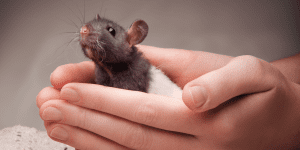Classical Conditioning in Dog Training. Part 1.
Many dog owners may wonder whether their dog has the ability to predict when things are about to happen. Perhaps he seems to know that a visitor is going to arrive, or some other such premonition. In this Holidays4Dogs article we look at some interesting facts about canine classical conditioning in relation to dog behaviour and
Pavlov, drooling dogs and bells.
It was in the 1890’s that Russian physiologist, Ivan Pavlov, first discovered that dogs salivated when presented with a dish of food. He experimented with this observation, by ringing a bell in conjunction with food being produced.
Eventually, the dogs salivated at the sound of the bell alone. Thus, the theory of classical conditioning – sometimes referred to as Pavlovian, or associative learning – was discovered. However, other scientists developed these studies with human and animal participants.
Watson and a boy named Albert.
Early in the 1900’s a scientist called John Watson carried controversial experiments with a baby boy named “little Albert”. Watson wanted to find out the effects of conditioning on the fear response in humans. He introduced Albert to several creatures such as a rat, rabbit and a dog.
To begin with, Albert wasn’t afraid of any of the animals – including the rat. However, when Watson let the child play with rat, he would loudly strike a metal bar with a hammer – startling Albert and making him cry.
Every time the baby touched the rat, Watson would do the same. Eventually, Albert (the poor child), came to fear not only the rat, but all the other small furry creatures as well.
Experiments such as those carried out on poor Albert, would be regarded as highly un-ethical in today’s society. However, it demonstrates that classical conditioning is a theory not limited to the canine species.
Advertisements widely employ the theory of classical conditioning. The product that an advertiser wishes to promote is paired with a feeling, or response. An example might be images of people having a good time while using a particular product, such as a car, or even something as simple as shampoo.
Classical conditioning can help dogs feel better and more relaxed.
 In a nutshell, canine classical conditioning refers to a process of learning by association. It can happen anywhere and with anything at anytime – either naturally, or with our help (training).
In a nutshell, canine classical conditioning refers to a process of learning by association. It can happen anywhere and with anything at anytime – either naturally, or with our help (training).
When used in dog training canine classical conditioning can be a really powerful tool and well worth knowing about, especially if you need to help a fearful, or reactive dog.
As an example, classical conditioning in relation to dog training might arise where a dog is afraid of heavy traffic, for instance.
By pairing the visual and sound effects of traffic with something good, like food – the dog will soon begin to associate the presence of traffic with the appearance of food.
This should eventually impact on his emotional response to the traffic – i.e. he should become much more relaxed.
Conclusion.
Classical conditioning, therefore, focuses on the dog’s emotional state. In other words, how he ‘feels’.
One of the most advantageous things about canine classical conditioning is that you don’t necessarily need to know why your dog is afraid – just simply what he is afraid of, such as traffic, men in hats, other dogs, or children.
In part two of our classical conditioning article, Holidays4Dogs will explain how to implement it in a training programme. It can be an invaluable way of helping dogs learn to love new things, and become more confident as they navigate the human world.


